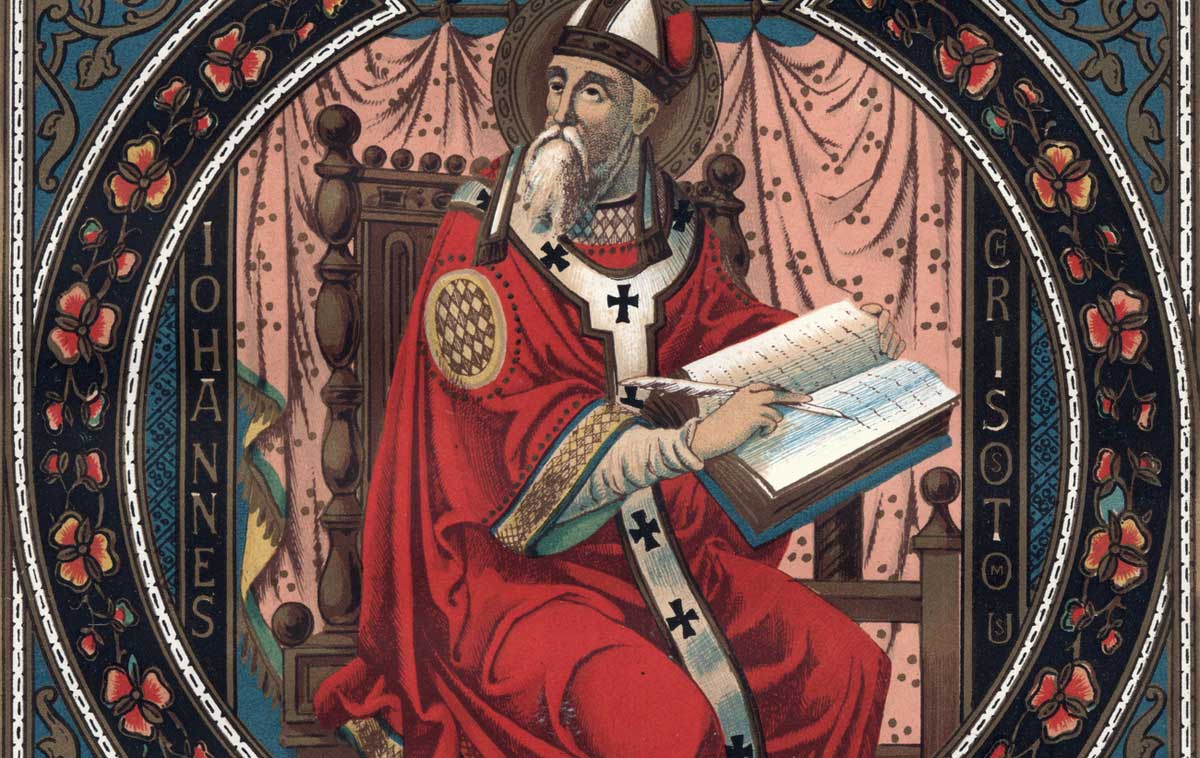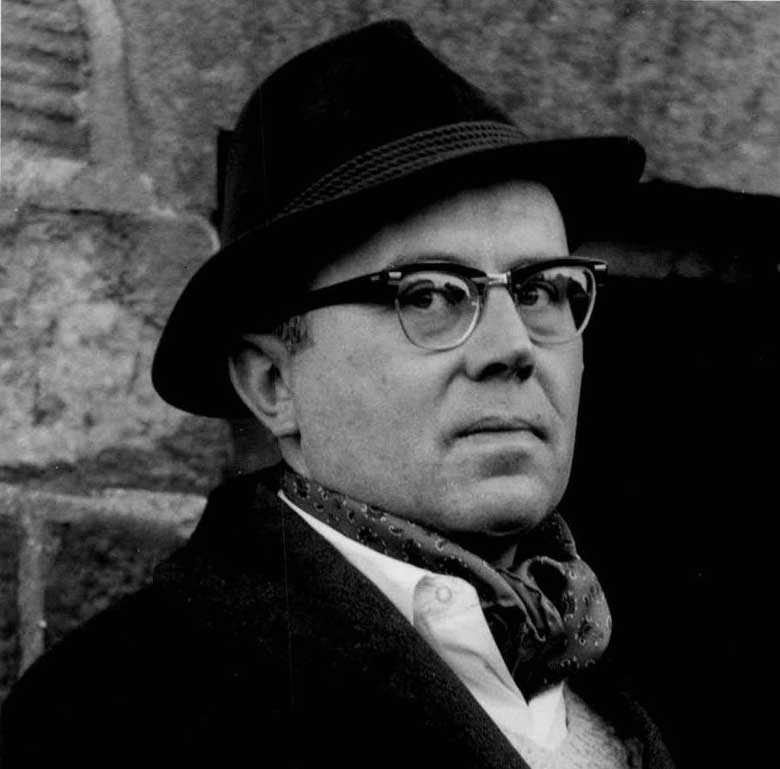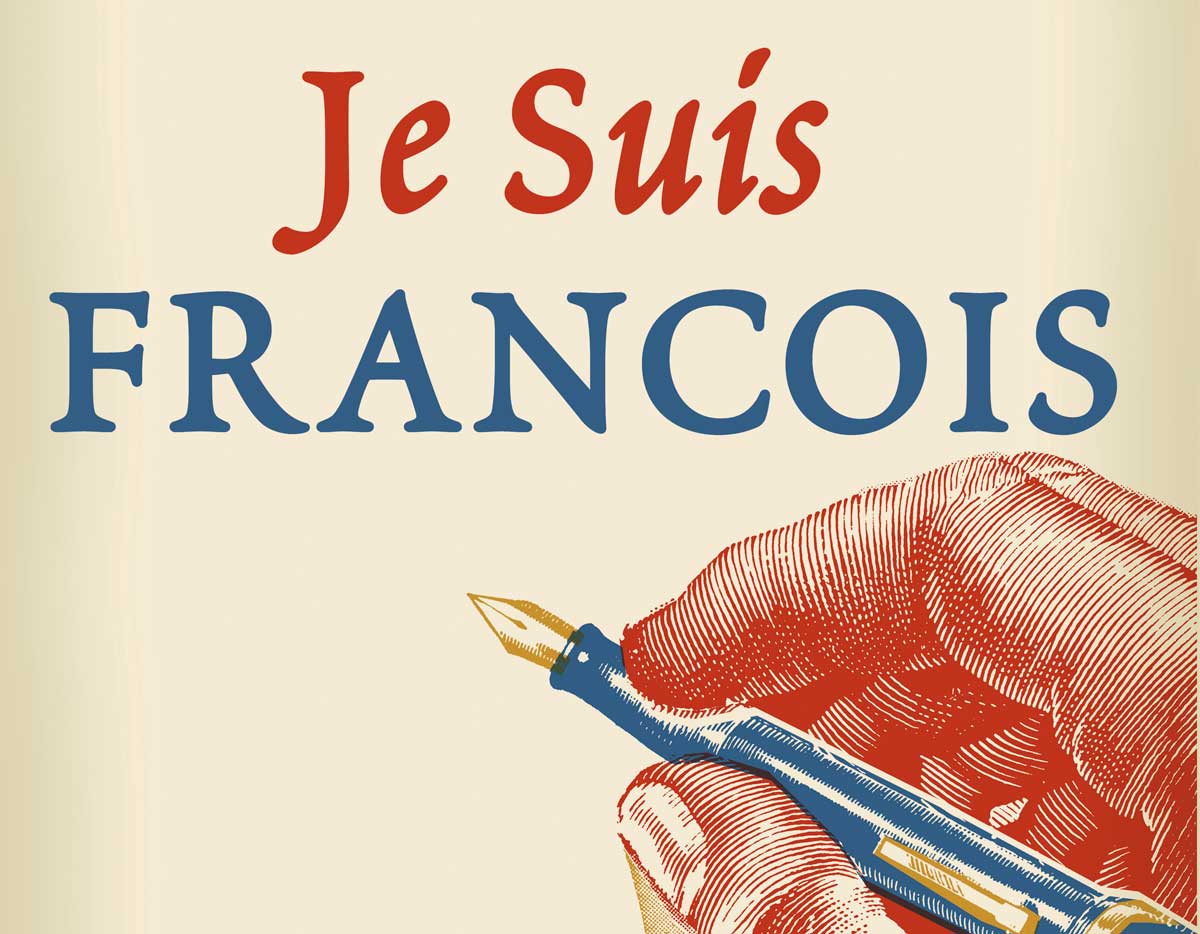Everyday Grace
St. Benedict—Apostle of the Incarnation
by Dwight Longenecker
While I was a student at the fundamentalist Bob Jones University, I was befriended by a little old lady named June, for whom I sometimes did a bit of gardening. June was a Catholic. When I went to England to study, she loaned me some money, and we stayed in touch. In one of her letters June suggested I might like to visit a Benedictine monastery. It was a courageous move. Suggesting a Bob Jones boy visit a monastery was a bit like dropping an invitation to a Jehovah’s Witness meeting on a good Catholic kid. But June had a hunch. She was an oblate of the Monastery of St. Anselm in Washington, D.C., and guessed I might like the monks. She was right.
A few months later I contacted the guestmaster and made my first visit to Douai Abbey in Berkshire, England. I visited during Lent, and the monks made a suitably solemn impression with their black robes, their courteous formality, and their beautiful and austere liturgy. They also made a good impression with their lack of humbug and hypocrisy. There was a kind of solemn self-mockery about them, and they extended the best kind of hospitality—a relaxed welcome that made me feel a part of the family. There seemed to be an ordinariness about the place that assumed that their unusual lifestyle was the most natural thing in the world.
My Lenten retreat was countered by my next visit, on July 10. The place was buzzing with a quiet excitement. One particularly fat monk said with glowing eyes, “You’ve come at a good time!” I didn’t know what he was talking about, but soon learned. July 10 is the eve of the feast of St. Benedict. The next day we had a glorious celebration of the Eucharist, followed by a splendid lunch that featured smoked salmon, steak, strawberries and cream, and a good deal to drink. The feast was sealed with port, cigars, and chocolate in the calefactory, or community room. Coming from a background that was uneasy with both fasting and feasting, I found the two Benedictine visits a revelation.
A few years later, as an Anglican curate, I hitchhiked to Jerusalem, staying in Benedictine monasteries en route. At each stop I was given a similarly warm welcome in keeping with Benedict’s Rule that all guests should be “welcomed as Christ.” Besides being hosted in some of the most beautiful and historic monasteries in Christendom, I was also immersed in the Rule of St. Benedict. Each day I would hear the wisdom of St. Benedict’s famous Rule as the monks read their daily prescribed excerpt from it. My first two visits to a Benedictine monastery and the subsequent pilgrimage revealed a hidden side to the Benedictine way of life, which accounts for its longevity. People like to think that monks are somehow cut off from the physical plane, raised above the concerns of mere mortals. A study of the Benedictine way, however, shows the opposite to be the case. My experiences, from the fasting and the feasting to the daily life of the monks, showed me that the spirituality of St. Benedict is supremely intertwined with the most ordinary concerns of everyday life. Benedictine monasticism is the ideal form of Christian monasticism because of its integration with the ordinary, and it is this emphasis that makes Benedict a universal apostle of the Incarnation.
The Life of Benedict
Benedict of Nursia was born about the year 480 in the Umbrian province of Italy. According to his biography, written by Pope St. Gregory the Great, Benedict was born into a “family of high station.” As a young man he went to Rome to study, but was disgusted by the decadent life of the city. Some 70 years before Benedict’s birth, Rome had fallen to the barbarians. By the middle of the fifth century, the Huns were ransacking northern Italy, and Rome had been pillaged for a second time. By the time Benedict went to Rome to study, at about the turn of the sixth century, the old empire was in tatters. Civilization had crumbled into chaos, and the social disorder was reflected in further conflict within the Church and every institution.
Benedict decided to run away from the city. He headed for Subiaco, a wild region somewhat south of Rome, where he lived in a cave for three years. The site stood above the ruins of Nero’s palace and the remnants of a Roman aqueduct. Looking over this spectacle, Benedict must have felt like Shelley’s traveler from an antique land who happens across the colossal ruins of the once great and disdainful king Ozymandias. The desert left by the barbarian invasions had spread across the proud Roman Empire, and Benedict’s generation was left to reflect on the remnants and to pick up the pieces. By fleeing civilization, he saved it, for it was the monasteries of Benedict that eventually preserved the culture of the ancient world. Someone has said, “In a world of fugitives, the one who runs away may be the only one who is heading home.” Benedict, in heading for the hills, was heading for home in the highest sense.
Eventually, some other monks, hearing of Benedict’s holiness, invited him to be their abbot. His holiness must have been more attractive from a distance, however, because some of the monks, disgruntled with his high standards, tried to poison him. Shaking the dust from his feet, Benedict went back to Subiaco, where he established 12 small monasteries with about 12 monks each. Basing himself on that experiment, he left Subiaco in about 529 to establish a monastery on the hilltop of Monte Cassino in central Italy. There he lived for the rest of his life, gaining a great reputation as a holy man.
At Monte Cassino he drew from earlier monastic authors to compose a new monastic Rule, a simple set of guidelines for a community life based around a balance of prayer, work, and study. A work of spiritual genius, that Rule has stood the test of time because of Benedict’s deep understanding of human nature. The Rule’s practical insights are flexible, moderate, and wise, preparing the ground for a truly simple spirituality to flourish.
subscription options
Order
Print/Online Subscription

Get six issues (one year) of Touchstone PLUS full online access including pdf downloads for only $39.95. That's only $3.34 per month!
Order
Online Only
Subscription

Get a one-year full-access subscription to the Touchstone online archives for only $19.95. That's only $1.66 per month!
bulk subscriptions
Order Touchstone subscriptions in bulk and save $10 per sub! Each subscription includes 6 issues of Touchstone plus full online access to touchstonemag.com—including archives, videos, and pdf downloads of recent issues for only $29.95 each! Great for churches or study groups.
Transactions will be processed on a secure server.
more from the online archives
calling all readers
Please Donate
"There are magazines worth reading but few worth saving . . . Touchstone is just such a magazine."
—Alice von Hildebrand
"Here we do not concede one square millimeter of territory to falsehood, folly, contemporary sentimentality, or fashion. We speak the truth, and let God be our judge. . . . Touchstone is the one committedly Christian conservative journal."
—Anthony Esolen, Touchstone senior editor










